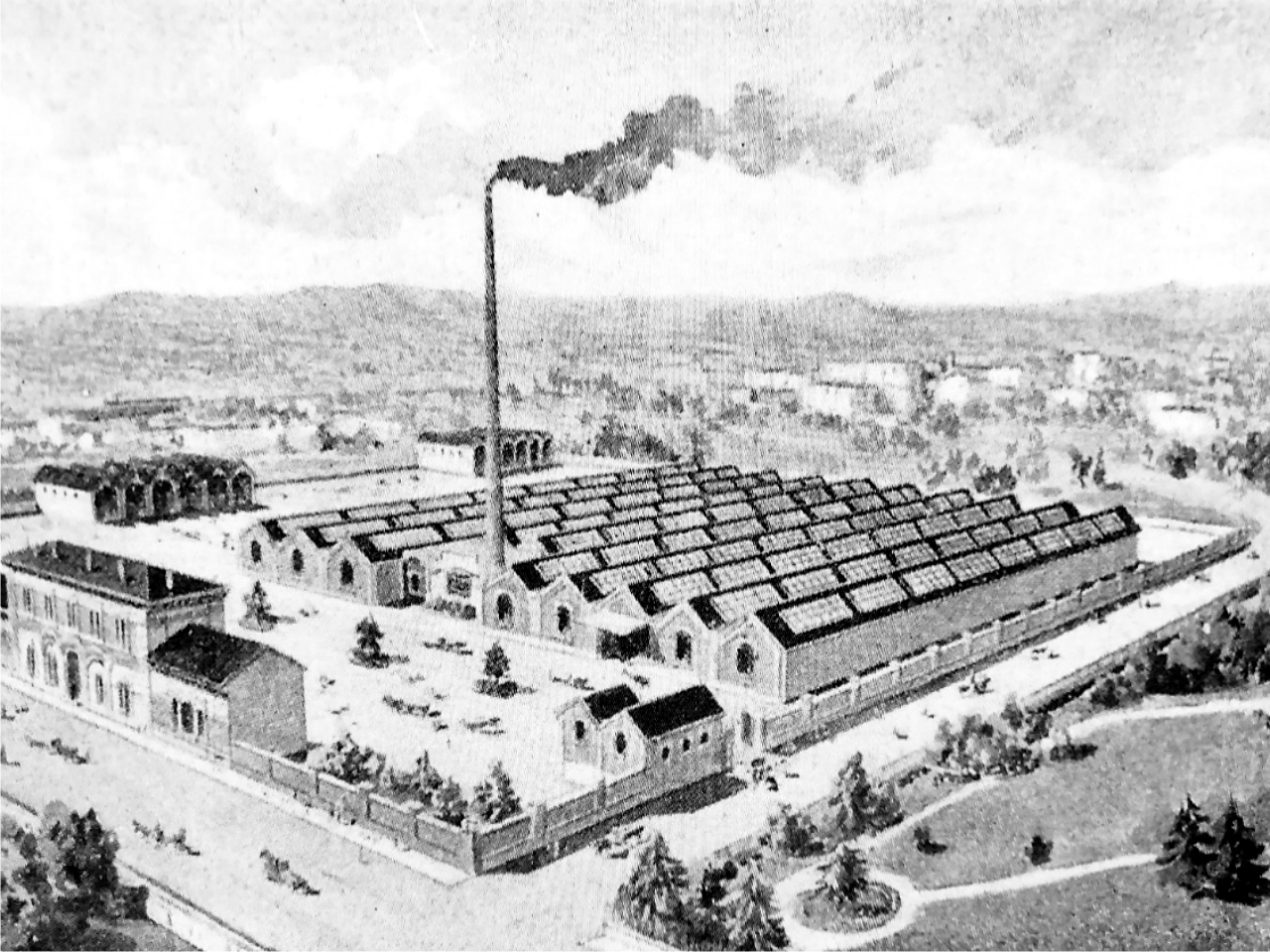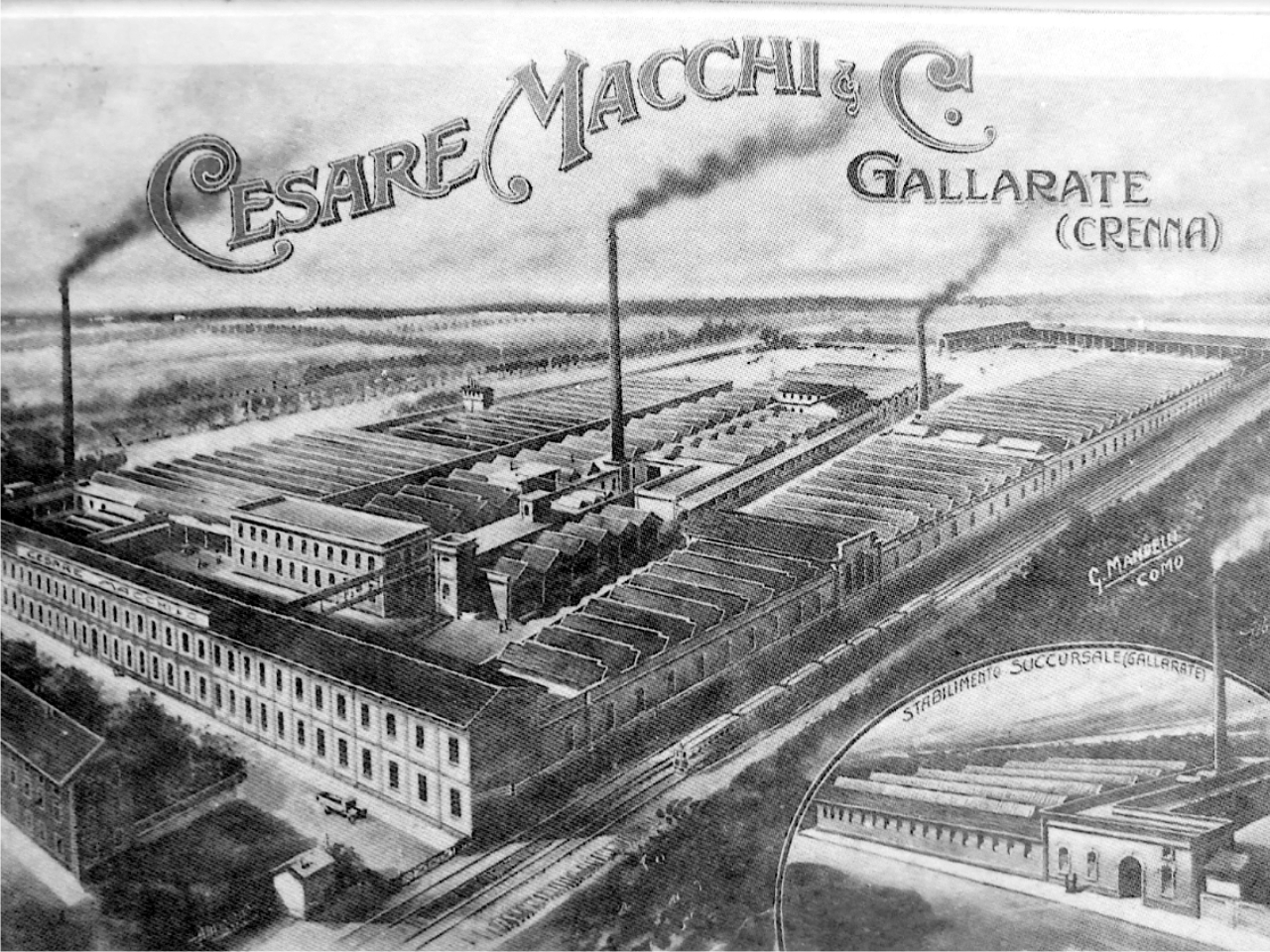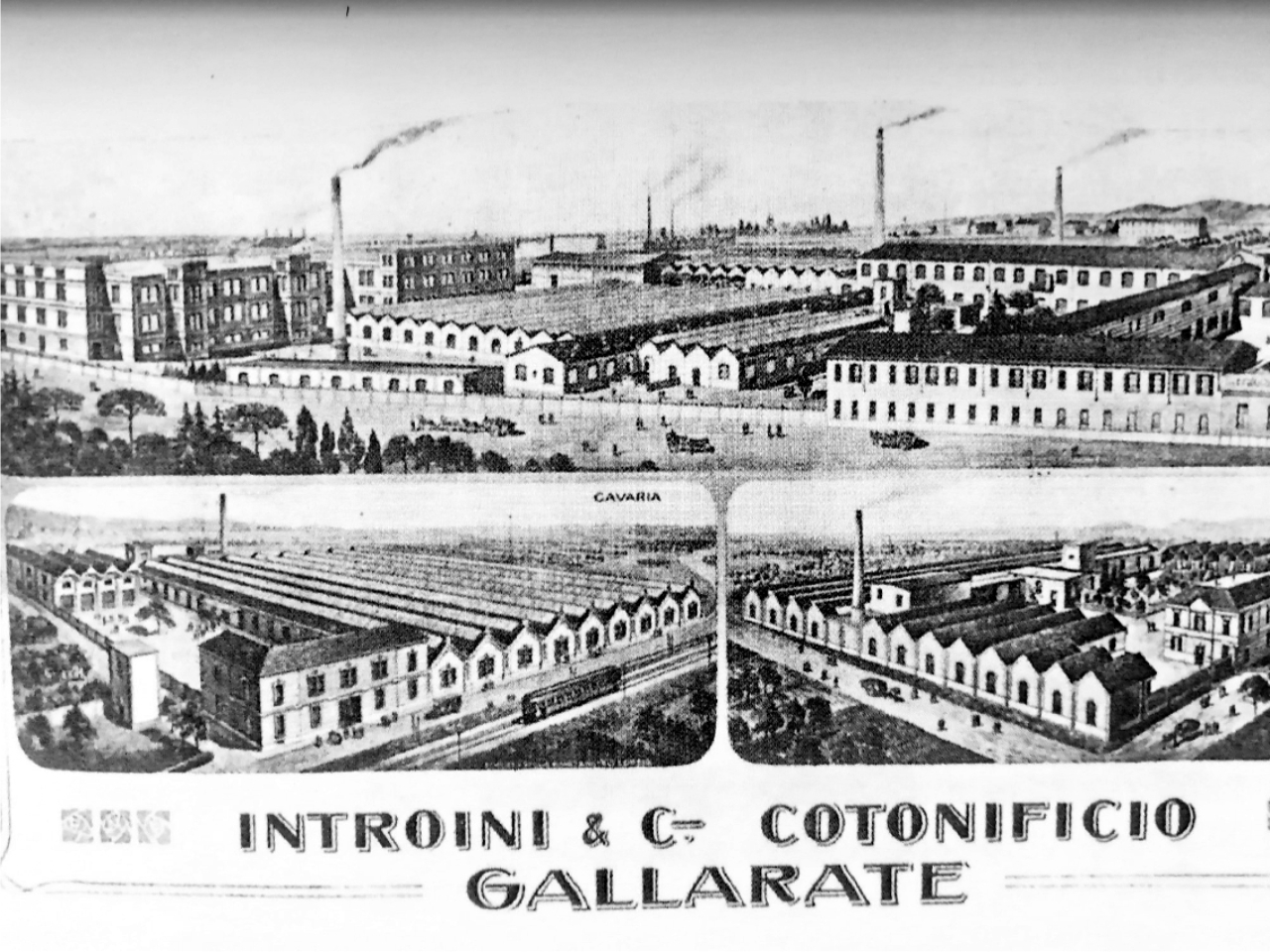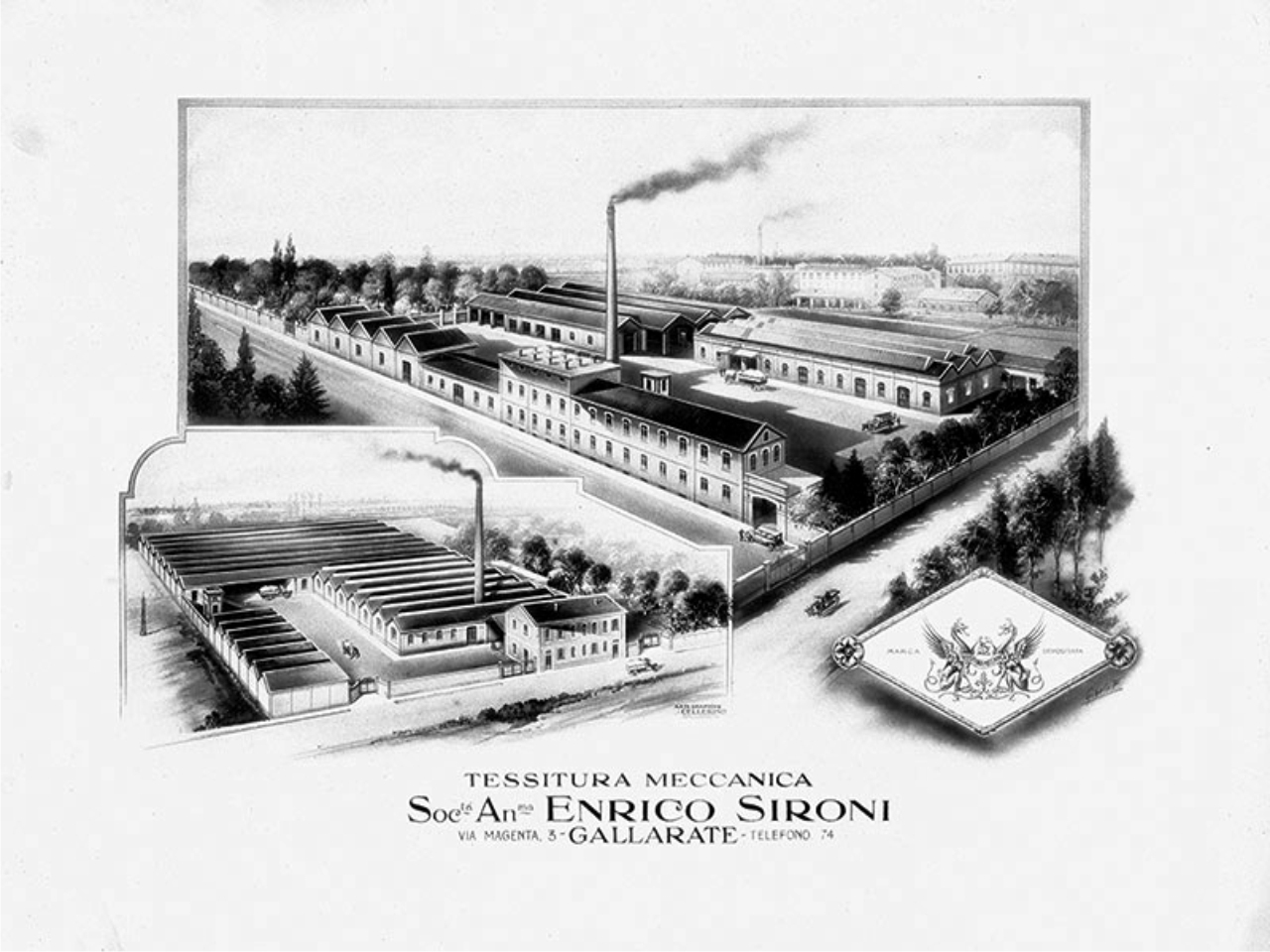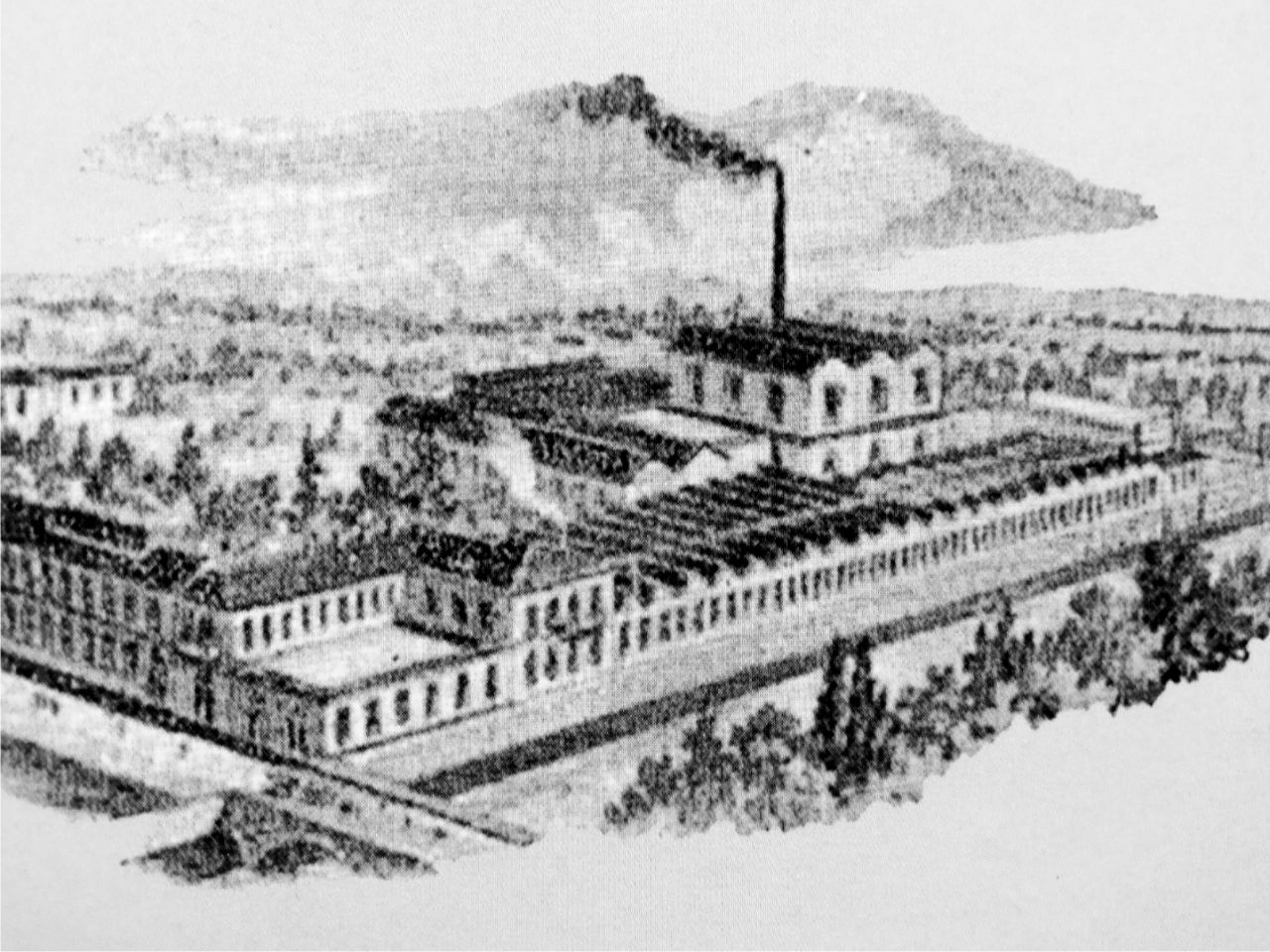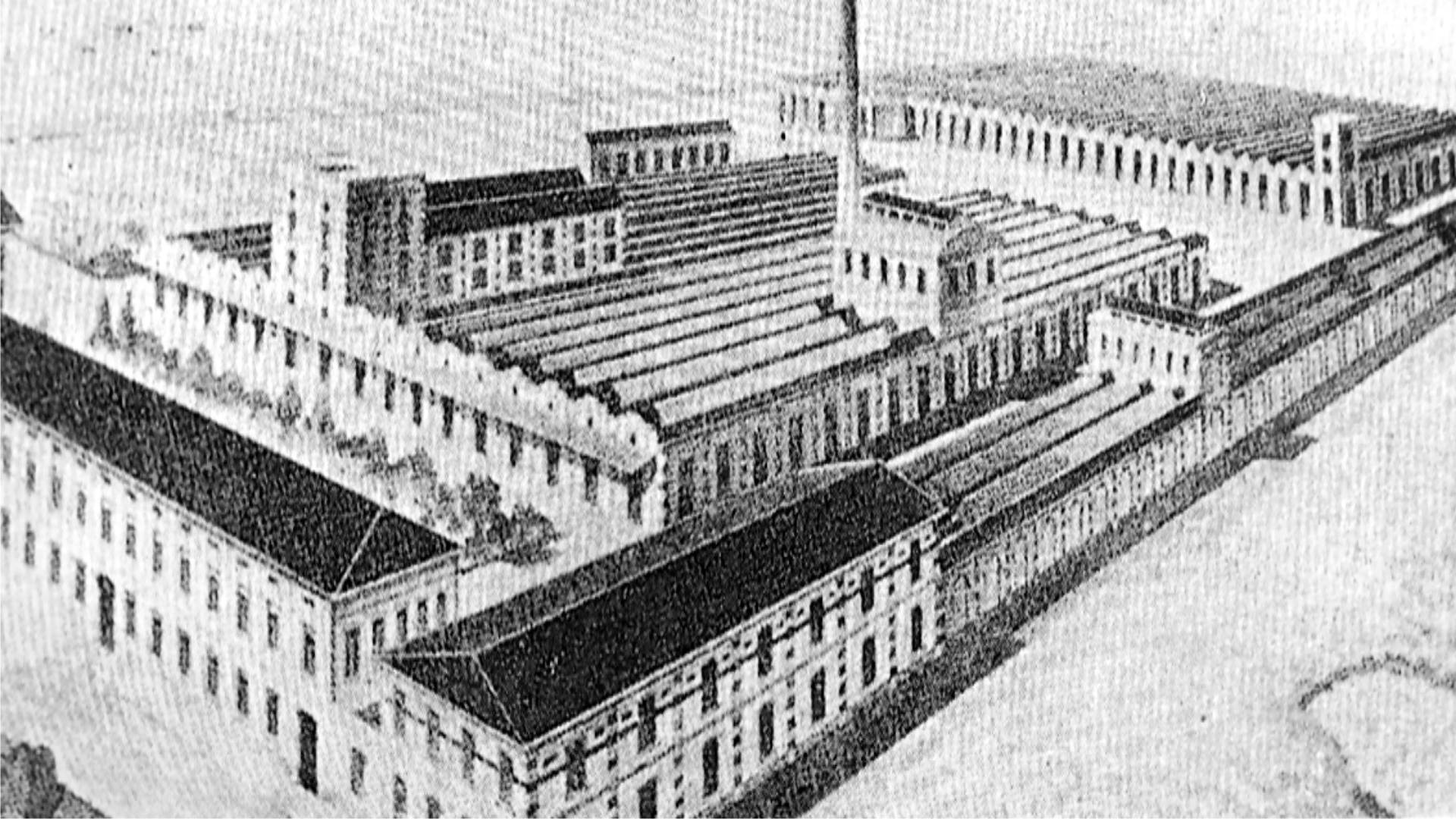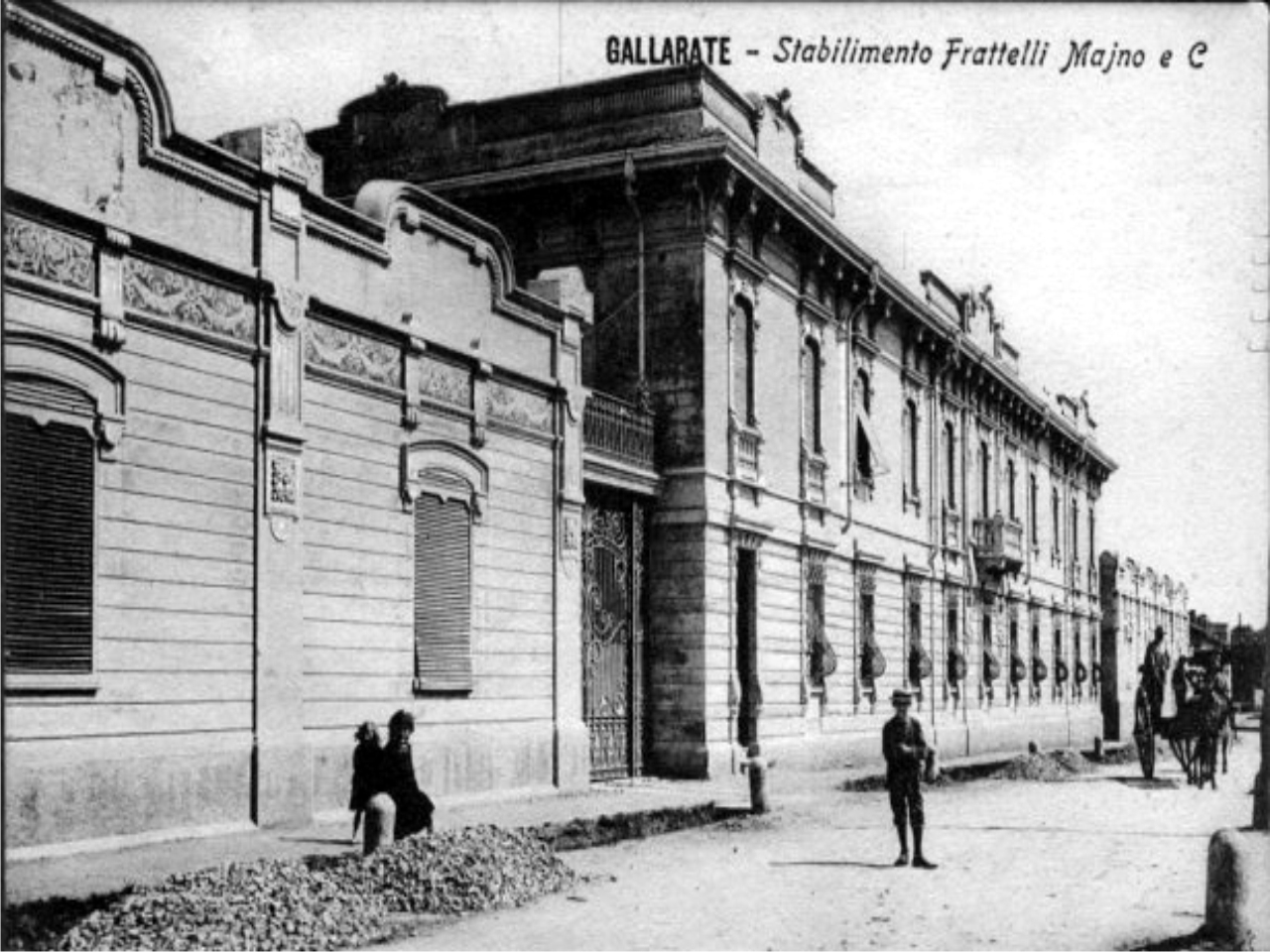Learn about the land of pioneers where the economic tradition ranges from trade to handicrafts, up to the textile and mechanical industry.
Trade
As already mentioned, trade was the first activity carried out in the area and started with the first Celtic populations of the VI – V century A.D. who settled in the territory of Gallarate. At that time, thanks to the presence of watercourses, the area served as an intermediary node, even before the advent of currency, of a system based on the exchange of goods such as Greek oil and wine, and objects of Greek and Etruscan manufacture destined for the Celtic princes, which were bartered for salt, meat, skins, slaves and, above all, tin from Cornwall, much in demand from Greece and the eastern Mediterranean countries.
Roman colonization started in the 3rd century BC, with urban and agricultural settlements scattered throughout the area, transforming the territory into small vassal states destined for Roman-Italic commercial and cultural expansion. Starting from the 1st century BC, the Roman presence was consolidated through the organization of a network of roads as part of the policy of the urbanization of towns involved with local business, and in particular through the construction of the road that led from Milan to Lake Maggiore.
Historic market
In the Middle Ages, Gallarate was little more than a small village called “Galerate”, as referenced in a parchment document dated 974 written during the reign of Otto II. This was the first document in which the city appears, with the village being defined as a “noble village inhabited by free citizens”. In the 12th century, Gallarate became a “borgo”, i.e. a rural community endowed with privileges but also with precise duties, such as exemption from certain taxes, the obligation to maintain roads and bridges, and the organization of the market, an activity for which Gallarate became the reference point for the entire Seprio area thanks to the presence of a series of porticoes, some of which no longer exist, which allowed the market to be held whatever the weather.
Street vendors came from nearby villages but also from further away villages, and even from abroad. These vendors, who came into the town every week, contributed to the liveliness of the center which expanded with the addition of churches, noble palaces, and porticoed houses with artisans’ and merchants’ shops. Several weekly markets dedicated to wheat, wine and livestock were held – in particular that of silkworm cocoons whose breeding was widespread throughout the district – but above all fabrics of all kinds, especially wool, cotton and linen, as archival documents of the period testify.
Capital of Castel Seprio
In 1287, after the destruction of Castel Seprio by Ottone Visconti, Gallarate became the capital of the county, thus initiating significant economic growth, and it became a rich commercial center. This remained true for the city throughout the Visconti-Sforza era up to the beginning of the French domination, about two centuries later.
In 1400, the market was suppressed by the Duke of Milan Galeazzo Maria Sforza who feared for the economic well-being of the capital, but it was readmitted in 1467 at the request of the Seprio captain Giovanni Visconti. In 1542, Charles V recognized the rights of the market which had been consolidated over previous centuries, and guaranteed its presence in the city in the following years. The weekly markets are still very popular even although they have, of course, lost the important role they played during the medieval period.
Commerce also took place through sales in small shops. Today, just like in the rest of the world, these shops have been affected by the crisis caused by the boom in online sales, just as they had previously suffered from the opening of large shopping centers. However, numerous historical activities have been recognized over the decades by Unioncamere in an effort to protect and promote companies present throughout Italy that are more than 100 years old.
Below are the longest-lived companies in Gallarate:
– Farmacia Dahò, pharmacy since the beginning of 1848, still in via XX Settembre 6
– Velati, optician’s since 1894, still in via Mazzini
– Ferramenta Minoli, hardware store since 1903, still in via Seprio 5
– Ditta Cristina, hat and accessory shop since 1910, still in piazza Libertà 1
– Drogheria Croci, wine and grocery store since 1925, still in piazza Libertà 1
– We For You, beauty shop and hairdresser, since 1930 still in via don Minzoni 14
– Acconciature Mazzucchelli, hairdressing shop since 1937, still in via Larga 3
– Panificio Caimi, bakery since 1939, still in via Pegoraro 12
– Macelleria Erettoni, butcher’s shop since 1939, still in via Mazzini 22
– Pasticceria Bianchi, pastry shop since 1934, still in via Sant’Antonio 1
– Stationery Angelo Borghi, stationery shop since 1945, still in via Carlo Porta 3
– Ottica Garzolino, optician’s since 1945 in via Mercanti
– Luzi Café, Bar since 1955 in via Leopardi 3
– Pasticceria F.lli Gnocchi, pastry shop since 1958 in via Varese
– Carù discos, one of the most important vinyl record shops in the world, as recognized by The Guardian in 2014, in Piazza Garibaldi since 1966
– Introini & Pavan, jewelry shop since 1963, still in via Gorizia 32
– Il Forno Salmini, bakery since 1968 in via Mazzini, originally in Casorate Sempione from 1889
– Alimentaria Crennese, grocery store since 1945, incorporated into Carrefour in 2018
– Cristalleria Bosco, glass shop since 1875, closed in 2018
– Salumificio Minoli, salumi shop since 1899, closed in 2016
Artisan Crafts
For a good part of the 18th century, the Gallaratese economy revolved around agriculture, the market, crafts and the new class of state officials who adhered to the lifestyle of long-established local families. In the 1769 report on the state of manufacturing activities is indicated the presence of «a scattering spinning mills, hand and water silk mills and silk looms which had increased by at least a third over the last decade and which, overall, employed at least 3,000 people.»
In fact, the presence of about 500 small businesses that exploited the energy supplied by water mills constituted a widespread micro-economy which, over the following century, favored the basic conditions for the development of manufacturing activity on an industrial scale, induced by the need to employ the male labor force not dedicated to agriculture. The construction of the Sempione road that connects Milan with Paris and passes through Gallarate happened during the French period, and made the city part of the great revolution that led to the birth of the industrial economy in the area.
Flowering economy
The flowering of the Gallarate area was not only based on the fabric trade, it was also a notable district for the production of pipes with Fratelli Lana, one of the few and among the most important in Italy for the production of articles for smokers, and the manufacture of walking sticks and accessories for umbrellas with Ambrogio Bernasconi founded in 1922 and still active today, and finally the Giuseppe Marelli shoe factory.
It was also one of the most flourishing gold districts in Italy due to the presence of numerous small and medium-sized companies. Of note are the Giacomo Ferrario goldsmith’s and jewelery factory in via Marsala, the P. Colombo goldsmith’s firm in via XX Settembre, specializing in the forging of gold articles, which established itself in the national market, Antonio Moglia goldsmith’s firm which has been in via Mercanti since 1922, and the Socci Dante firm which has been in via Cavallotti since 1942 and the ancient goldsmith’s factory of Carlo Binaghi, under the arcades of the centre, which already had the brand of the Imperial Royal Austrian Government since 1830, an activity carried out today by the heirs.
Goldsmith tradition
The goldsmith tradition of the Gallaratese derives from the extraction of gold in the mines of nearby Monte Rosa and the fact that it is located on the way from the Milanese area towards the important district of Valenza Po in Piedmont. In fact, the culture and tradition of the goldsmith profession of the city of Gallarate and the surrounding area has strong roots dating back to the eighteenth century, and was very active at the end of the twentieth century. Today, the tradition continues even although the high cost of gold has reduced and distorted this market once aimed at the middle classes.
The city of Gallarate hosts the only goldsmith school in the whole province of Varese and the Maga museum is one of the partners in a new project aimed at relaunching the professional training centre. Once again, the characteristics of the territory determined the direction in which the people of Gallarate developed their skills and entrepreneurial ambitions. In fact, the Anzasca valley, the area surrounding the lower villages of Macugnaga and the mountains above San Carlo, boasts centuries-old mining traditions linked to the exploitation of its gold deposits.
Anzasca vallery mines
The Pestarena mine, the most important in the whole district, was in operation until 1961 but the first evidence of extraction dates back to a document from 1291, while the first signs of real progress took place in the eighteenth century, in particular between the years 1760 -1785 when it became a mining centre of primary importance, with the emergence of a class of entrepreneurs made up of families from the valley. In the first half of the 19th century, the mines of the Anzasca valley entered a new period of splendor thanks to various groups of investors from across the Channel, whose participation was favored by the liberalization of the Savoy market ordered by Cavour in 1856.
The first was founded in 1863, The Vallanzasca Gold Mining Company Ltd, followed by the the area’s most important mining company, The Pestarena Gold Mining Company Ltd, in 1866. These and others continued their successful mining activity over the first half of the 1900s, however, in 1954, the first signs of crisis arrived with the increase in transport costs and the progressive reduction of personnel which led to huge losses. Finally, a serious accident that occurred in 1961 in which four workers died, heralded the definitive closure of the Pestarena mines.
Agriculture
Starting from the mid-17th century, with the end of the Thirty Years War which contributed to the spread of the plague, and with the growth in the population, there was renewed intensive exploitation of the territory aimed at reviving the shattered economy. More space was given over to agriculture, modifying the landscape of the countryside and hilly areas through the progressive introduction of mulberry trees, introduced in Italy for silk farming and spread by Ludovico il Moro in the fifteenth century.
These mulberry trees were used to house and feed the cocoons of silkworms, which in this area were of excellent quality, but the wood from the trees was also used to strengthen the banks of ditches, as well as in vineyards to support the rows of vines. The growth and structural renewal of the village progressed over the following centuries, passing, in 1713, from the Spanish to the Habsburg domination, and continued to develop with the introduction, between 1796 and 1814, of new economic strategies ordered by Napoleon during the period of French domination.
Crisis
In the years immediately following the unification of Italy, the agricultural world of the Gallarate area, as with the rest of Lombardy, suffered from a profound crisis due to a long drought and the onset of certain diseases which killed off both mulberry trees and vines. Furthermore, the impoverishment of the land due to both the lack of rich fertilization practices and agricultural rotation, as well as the pressure of onerous taxes, had done little to encourage the development of agricultural entrepreneurship. With the land having become barren and many farmhouses abandoned, the moor of Gallarate was given over to military exercises. In 1863, emigration to the Americas began and increased steadily, reaching about 8% of the inhabitants for the city of Gallarate alone, of which more than half were people principally dedicated to agriculture, thus decreeing its end.
The agricultural crisis and the consequent availability of low-cost male labour, but above all, female work carried out in the home by peasant families who now had unoccupied time that they had once spent working in the fields, favored the birth of industry, a move made possible thanks to investments made by a nucleus of courageous inventors and local captains of industry, who contributed to the transformation of a medieval village into a productive district that excelled in textiles, metalworking, aeronautics and motorcycle industries.
Pioneers of the textile industry
The fulcrum of Gallarate’s productive activity was constituted by the cotton industry whose development was not immediate, but rather the result of a process of change that officially began at the end of the 18th century with Andrea Ponti, who was born in 1752 and died in 1819, and who, in 1780, founded a moleskin and satin factory, and was also a pioneer of the Italian textile industry, having, in 1818, introduced for the first time in Lombardy the mechanical spinning of cotton and the use of “Jannettes”.
Another important Gallaratese pioneer of the Lombard textile industry was Costanzo Cantoni, born in 1800, who founded his first production activity in 1820 following the example of Ponti. He quickly became famous, and his company was the only one from Lombardy present at the Universal Exhibition of Paris in 1889. Industrial production made it possible to significantly upscale trade, which remained the main activity of the city.
In 1860, Alessandro Borgomaneri began to produce yarns and fabrics from linen, hemp and cotton, a business bolstered by his son Carlo, who enlarged the factories in Gallarate. With the development of the railway network following the Unification of Italy, industrial settlements multiplied throughout the city and were located outside the historic center, exploiting the new railway lines, the course of the Arno and the road network. Furthermore, the construction of industrial buildings with adjacent living quarters became more common over time.
Starting date
However, the starting date of the Gallaratese textile industry was officially 1872, when the entrepreneur Eugenio Cantoni, along with other entrepreneurs in the cotton sector, founded the limited company Cotonificio Cantoni, whose share capital subscribers, in addition to the two new banks of which Cantoni was the promoter, featured major representatives of Lombard industry, including Andrea Ponti junior, the Turati brothers, Napoleone Borghi and Giuseppe Colombo. From this moment, private and state funds and the large workforce were used exclusively in the new textile industry, whose core was the cotton industry.
Among the “pioneers” of the Gallarate cotton industry, we should also mention Giulio Sacconaghi who, in 1870, for the first time in Italy, introduced the manufacture of smooth and striped velvets, Cesare Macchi, whose company, founded in 1879, became very important in the production of handkerchiefs and printed fabrics, and Alceste Pasta, a producer of cotton fabrics from 1870 onwards who was also known as a philanthropist. At the same time, a series of industries supporting the textile world arose, such as a factory for the production of healds, combs, shuttles and bobbins, with local industries alongside foreign producers, dyeing and bleaching industries, the embroidery industry introduced by the Swiss, Francesco Reiser, in 1873 , the knitwear and clothing industry, which was started by Luigi Sironi in 1868, while in 1884 came the manufacture of hosiery and garments with the use of the first hand-operated “straight-linear” machines.
Capital of industrial district
At the end of the 19th century, Gallarate was the capital of a district of 53 municipalities connected to Milan by tram, and was best known for being of such significant industrial importance that it established its own bank, founded in 1881 as a branch of the Banca Ticinese Svizzera Italiana, which then became independent in 1885.
To give an idea of the importance of the business that revolved around Gallarate in 1881, it is enough to assess the value of 69,000 Lire against the 16,000 Lire of the neighboring and larger town of Busto Arsizio, also an important textile industrial center. Furthermore, in the midst of the industrial transformation of the city, some families including the Cantoni, Borghi and Ponti established the cotton association and stock exchange with the aim of regulating national and international market prices.
The industrial reality of Gallarate at the end of the 19th century consisted of:
– 12 semi-mechanical weaving mills, 800 workers
– 1 steam-powered weaving mill, 64 workers
– 1 steam factory for combs and other spinning and weaving tools, 35 workers
– 3 button factories, 50 employees
– 1 dry cleaner, 12 workers
– 1 fabric printing house, 10 workers
– Series of small businesses dedicated to the production of embroidery, ribbons, shawls.
– 1 tanning factory, 8 workers
– 1 glassworks
– bicycle factory
– 1 printing house, 6 workers
– Series of Goldsmiths
– 1 lime kiln
– Hoffmann kiln for bricks
– 1 iron and brass foundry, 64 workers
– 1 workshop for illuminating gas
Manchester of Italy
Following the creation of the hydroelectric plant of Vizzola Ticino in 1899, from the 20 companies existing in 1888, employing 1,734 workers, the number, in 1900, passed to 57 factories with 2,159 workers and, in 1911, to 367 factories with 7,758 workers. Furthermore, from 1880 to 1910, the urban population grew from 8,617 to 17,441 inhabitants, thus doubling in thirty years.
In reference to the prodigious economic and industrial development of Gallarate textiles, which reached its peak between the end of the 19th and the beginning of the 20th century, nicknames were coined such as the “city of textiles”, the “city of 100 chimneys” or the “Manchester of Italy”, a title it contended for along with the nearby Busto Arsizio.
Textile industry
To name a few of the most important factories, besides Tessitura Bassetti which we have already talked about in Focus 1, there is the Tessitura Enrico Sironi founded in 1892 which specialized in linen and is still active today; the Cesare Macchi cotton mill built between 1897 and 1899 in via del Lavoro in the Crenna district, which was spread over 30 thousand square meters and in 1911, provided work for 1200 workers, but has now been converted into various manufacturing plants.
The Cotonificio Maino, ex Introini, built in 1904 in via Pegoraro, which created completely new and aesthetically beautiful items such as damasks and lacy goods, and which was also important for its imposing building which is externally elegant and rich in Liberty style decoration, and was designed in accordance with the most advanced building, industrial and hygienic principles, and which today, has been converted into various manufacturing and food distribution plants.
The Borgomaneri Manufacture, whose headquarters, built in 1902 in via Roma, with an elegantly decorated facade with gray pilasters on a yellow background in Liberty style, was recently equipped with precise machinery for mechanical weaving, and with bleaching, dyeing and starch, and finishing departments, but is now abandoned; the Piero Crosta Tessitura established in 1904 in via Venegoni, has today been converted into a production site for Tom Ford; the 1923 Bellora cotton mill in Corso Leonardo Da Vinci in the village of Arnate, called the mini Crespi d’Adda, which is currently divided into various craft and commercial businesses including Parah.
Embroidery industry
The embroidery industry also played a key role in the industrial development of Gallarate. Over the last thirty years of the nineteenth century, eighteen embroidery workshops were opened, in particular from 1884 onwards, when Duke Guido Visconti di Modrone opened a bleaching center in Maddalena, on the river Ticino. Among the most important is the Ricamificio Zibetti, founded in 1905 and still active today.
The same era saw the birth of other industries supporting the textile sector. In addition to the pre-existing Tintoria Giovanni Clerici & Figli founded in 1869, there was Candeggio Gallaratese established in 1907, and industries in the mechanical sector, including one producing textile machines owned by Costantino Cattaneo, the Paolo Huth firm from 1901, the largest German factory of embroidery machines, and Carlo Macchi’s Officine Meccaniche Gallaratesi established in 1907 on a plot of 10,000 square meters, in which 150 workers still work today.
In 1911, the population exceeded 17,000 inhabitants. This significant increase was due to the unceasing development of industry which resulted in a continuous flow of incomers to the area, and to the improved health and financial conditions of the masses. In the photos are some postcards of the era.
Post World War II situation
At the end of World War II in 1945 came a difficult period for the cotton industry due to shortages of raw materials as well as declining domestic demand which caused widespread unemployment. The situation was resolved thanks to the loan of two billion, 690 million Lira, aimed at relaunching the industry and at the reconstruction of public works, a measure adopted by the National Liberation Committee, through which the wages of the redundant workers were integrated and new impetus was given to the sector, laying the foundations for the economic boom of the 1950s. In 1961, there were about 900 industrial companies, employing over 15,000 workers.
Today the conditions have changed; many have abandoned their business, while others continue to invest and focus on quality, and have managed to overcome the crises of the 90s and of 2008, testifying that the textile industry is still a living reality that has much to offer, both to Gallarate and its surroundings, and also to the province of Varese which, with its over 1,500 active businesses producing exports to the sum of almost one billion euros, has grown by 37% in the last ten years and employs almost 13,000 people.
Missoni
The immense heritage of the buildings constitutes the industrial archeology of the area, serving as a memory of its glorious past and of the impact that textiles has had on the city, on its economic, cultural and urban development, on its inhabitants and of how the textile and high-fashion sectors have contributed to bringing Beauty to the city of Gallarate while curating both functional and decorative-artistic aspects. Among the companies best-known at an international level is Missoni, founded in Gallarate in 1953 by Ottavio and Rosita Missoni. Their son, Luca, recalled how his family chose this area for its textile skills and taste for beauty. In the following video you can enjoy the magic of the weaving of the brand’s famous designs.
MA*GA museum
Despite their move to nearby Sumirago, the Missoni family never lost their ties with the city and in 2015, as part of the events organized in Lombardy on the occasion of the Expo, the Museum of Contemporary Art of Gallarate Maga put on an exhibition to celebrate the brand’s 60 years of history and the union between the brand and modern art. The exhibition “Missoni, l’arte, il colore” set out to investigate the creative process behind the brand’s famous, distinctive patterns by revealing each stage of the production chain, showing the details and creative cues that lie behind a seemingly simple piece of clothing.
The exhibition also examined the deeper theme of the interweaving between these two creative souls, between the weft and the warp of coloured threads, and between fashion and art, and explored the contamination that takes place between architecture, furniture, fashion and art, through the exhibition of works from Balla to Depero, Kandinsky to Klee, and from Fontana to Accardi.
There is a photo-gallery that can be visited on the website with images of the exhibition and the final highlight of 110 mannequins with clothes made between 1953 and 2014. In 2021, on the occasion of the centenary of the birth of Ottavio Missoni, the Saga decided to make the exhibition of Ottavio’s Tapestries in the museum room dedicated to him a permanent part of the Museum’s collection, with a thematic narration of his artistic work and the layout of a series of large patchwork tapestries made from knitted fabric and original preparatory drawings, a display conceived of by his son Luca and designed by Angelo Jelmini. The virtual tour can be found at the link www.ghelfi360.com/21/missoni
Pioneers of the mechanical industry: aerostatics, aeronautics, motorcycle
The American Civil War caused problems for the importation of cotton, therefore the textile industry, predominantly cotton in Gallarate, was joined by the metalwork industry, in particular aeronautics, thanks to the presence of an immense moor, used until then only for military exercises. The area grew in importance as it became the site for the development of the nascent aeronautical industry which required vast flat areas, free of obstacles and with favorable climatic conditions throughout the year.
In addition to being able to perform takeoffs and landings with absolute safety, pioneering pilots also needed reserved, isolated areas to be able to protect their experiments. Furthermore, the Gallarate moors were quite close to Milan and to important communication routes. Lastly, the deep-rooted mechanical skills widespread in the area were fundamental to the founding of the many companies that created the history of Italian aeronautics at the beginning of the 1900s: the Caproni mechanical workshops, the Agusta workshops, Secondo Mona, SIAI Marchetti, ITALA, M.V. Meccanica Verghera, Aermeccanica, Aviatronik and the development of Milan Malpensa Airport.
Balloon flight
However, the history of the city’s aeronautical vocation begins at the end of the 18th century. In Luigi Riva’s chronicles on Gallarate between 1760 and 1805, we read of the raising of the aerostatic balloon on February 26, 1784, which took place in Piazza Pasquaro, present day Piazza Garibaldi, eight months after the world’s first flight by the Montgolfier brothers, and two weeks before the first balloon flight in Italy on 13 March 1784 in Brugherio, in the province of Monza, at the behest of Count Paolo Andreani. The count had witnessed the first French experiments and was so impressed by them that he wanted to finance a balloon flight from the garden of his villa, a flight which stayed airborne for about 25 minutes and covered a distance of about 9 km.
Brusa Balun
This exceptional event was reproduced in numerous paintings by various painters. A second flight was organized outside the town, on the heath between Busto and Gallarate, on 5 June, 1785. Riva recounts that many foreigners flocked to the exceptional event. Due to an an excess of alcohol being lit, the ball immediately caught fire causing profound disappointment among the spectators, especially those from Busto Arsizio who, from that day on, coined the nickname “brusa balun” in local dialect, which means balloon burner, as a sign of mockery. In the photo is the picture Paolo Andreani’s Ascension at Villa Moncucco at the Museum of Patri Studies in Gallarate.
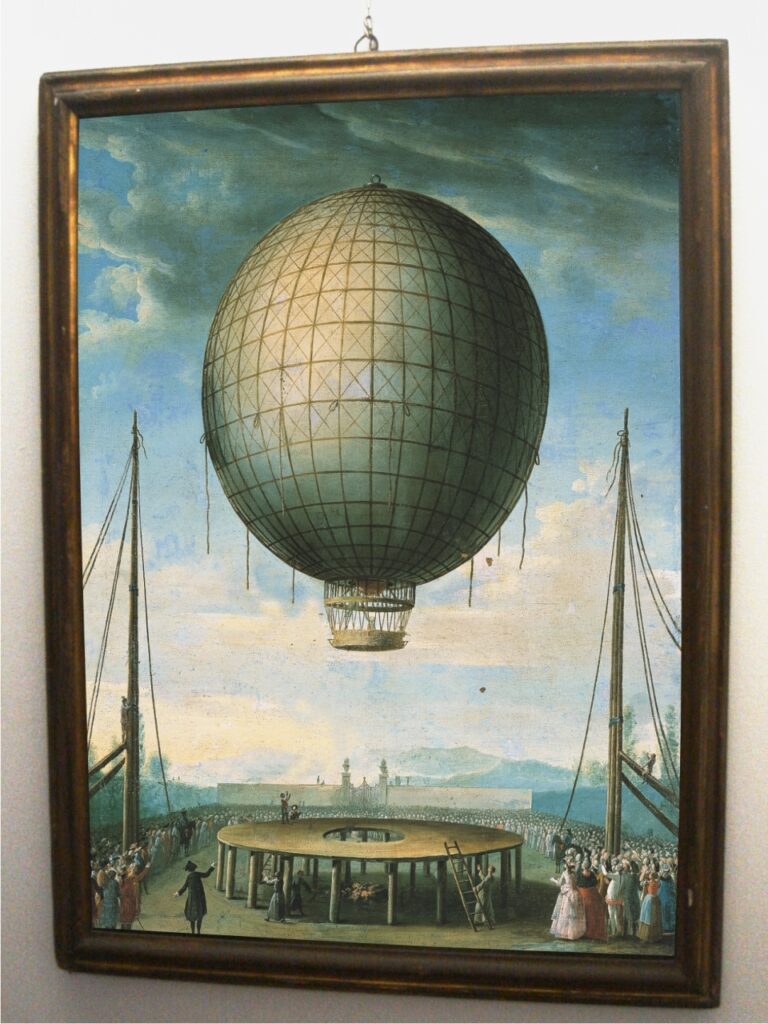
At any rate, the enthusiasm for flying never left the people of Gallarate who saw the first aerostatic balloons used in the military sector first hand on November 6, 1884 when the Italian Army officialized the establishment of the del Genio Aerostatic Section, which, from 1905, was headed by Major Maurizio Morris. In 1908 the citizens of the Gallarate area witnessed the first known aviation event in the area, when the Verdi balloon lifted off from Piazza d’Armi, present day Piazza San Lorenzo, where the Cavalry barracks were located at the time and headed towards the moor, passing Lonate Pozzolo and the Ticino in the direction of Novara, in Piedmont, to then land in Vercelli, reaching an altitude of 1700 metres.
Malpensa Aerostatic Park
In the spacecraft of the balloon piloted by the aeronaut Erminio Donner Flori were his son Pietro and the gentlemen Riccardo La Croix and Cesare Longhi. In the photo is a 1913 postcard from the Cascina della Malpensa Aerostatic Park.
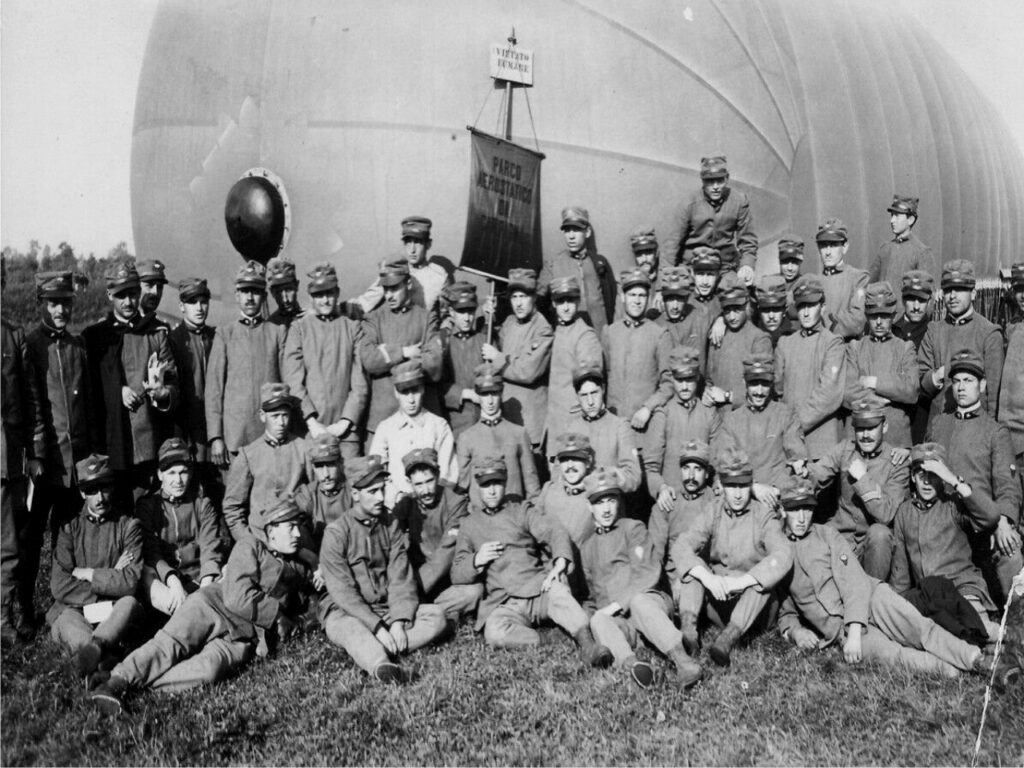
Worldwide “flying fever” began in 1903 in Paris with the Wright brothers and exploded after 1905 when the two brothers demonstrated their ability to control and stabilize the flight of a “heavy object”. In a world that was building myths around the aeronautical industry, the first Italian intellectual who became passionate about flying was Gabriele d’Annunzio, who coined the term “velivolo”, aircraft, which was used for the first time in 1909 in his novel Forse che sì forse che no. In general, in the early twentieth century, the Malpensa moors experienced a profusion of pioneering ideas, technological innovations and experiments relating to the world of aviation, highlighting the vocation of this area for flying.
The first experiments with airplanes date back to 1910 by Giovanni Battista Trotti from Gallarate, who was able to build the first prototypes thanks to Cesare Galdabini who granted him part of his mechanical plant. Once completed, the airplane was taken to the Sports Field of the Gallaratese Gymnastics Society and set in motion in front of an incredulous and festive public who had paid a ticket to attend the show. The young Trotti failed in his experiment of making the airplane take off, an experiment which required large spaces and considerable investments.
Cascina Malpensa
He was a student at the Milan Polytechnic in the engineering faculty, and, on the eve of Italy’s entry into the First World War, decided to enlist as a volunteer. Trotti was transferred to the aviation department and attended the first piloting school at Cascina Malpensa where he obtained his aviation pilot’s license which qualified him to pilot Caproni bombers. He became such a skilled pilot that he was given command of the aviation department and was awarded a bronze medal for military valor. Once he returned to civilian life, perhaps tried by the experience of war, he decided not to pursue his passion for flight. In the photo is Giovanni Battista Trotti taken from the book by Alberto Grampa, Giovanni Battista Trotti. Un gallaratese con le ali published in 2020.
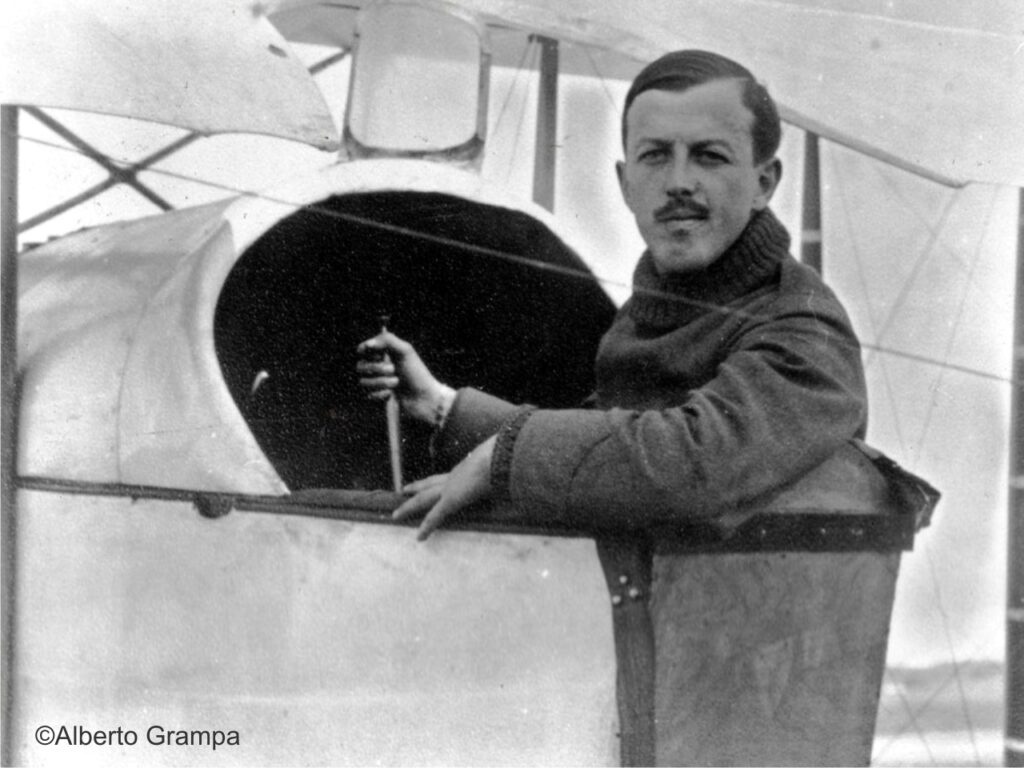
In addition to attracting curiosity seekers and enthusiasts, the development of the nascent aeronautical industry also interested the Italian armed forces, who purchased their first biplanes from the Wrights in 1909, with a contract that included pilot training courses. The Wrights arrived in Rome as part of their European demonstration tour and gave lessons to the first two Italian pilots. Their stay in Rome was also an opportunity for an intrigued young man, originally from Trento, to get to know the two brothers.
Gianni Caproni
The young man was Giovanni Battista, known as Gianni Caproni, the son of small land entrepreneurs, a recent graduate of the Munich polytechnic in civil engineering and with a specialization in electrotechnical engineering from Liège. He also met them in Paris, where the first aircraft workshops were being built. When he returned to Trento, that same year he set up an aircraft manufacturing business with his brother Federico and three workers, and they built their first aircraft, the CA.1, a biplane with a single engine fuselage and two propellers, with a wooden structure and joints made from canvas binding and aluminum reinforcements.
For testing it was necessary to find large flat spaces to allow for take-off and landing. Caproni, his brother and the workers arrived on the moors around Gallarate at the suggestion of his brother Morris’s friend and university classmate. Thus it was that Gianni Caproni fulfilled his destiny of becoming a great Italian aviation pioneer and, at the same time, his arrival in 1910 would change Gallarate forever, as well as its moorland, which would now be definitively consecrated to flying. The pride that the aeronautical field aroused in the inhabitants of the Gallaratese grew to the point that various celebratory postcards were created with biplanes and monoplanes flying over the city.
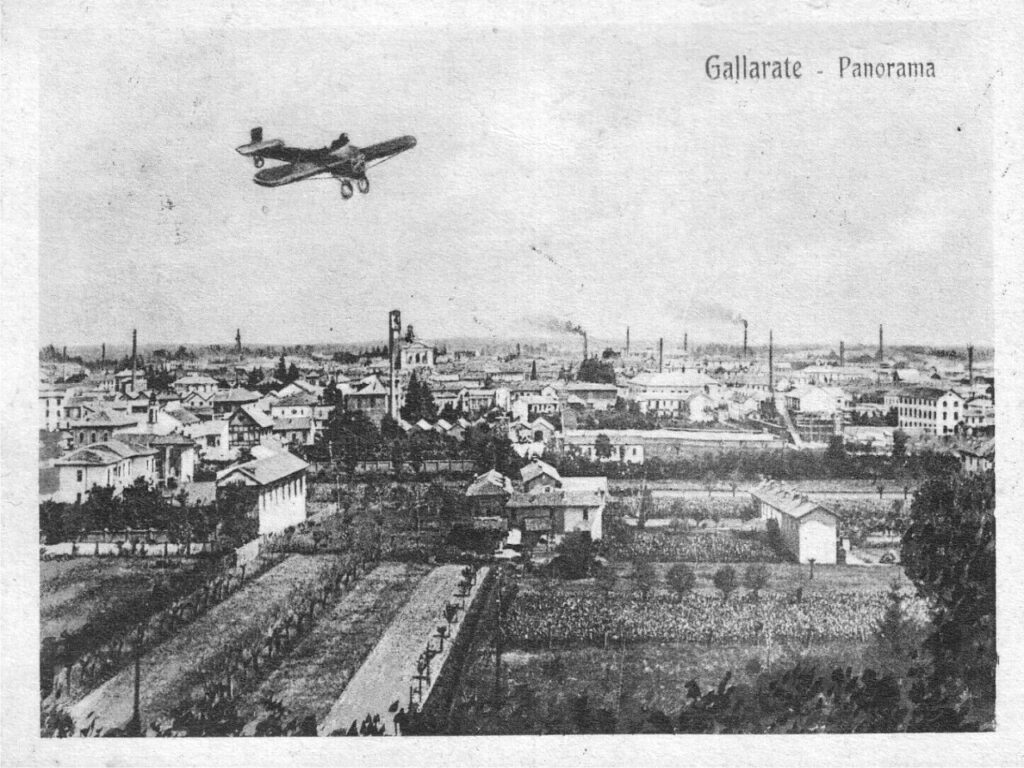
Campo della Promessa
The new heroes were the pilots and mechanics who from the very first days they flew over Gallarate, received the applause and enthusiasm of the inhabitants who met the pilots at meeting points. These first experiences enthused the inhabitants of Gallarate and the surrounding area but crowds of curious people also arrived from Milan, so much so that a special car service was set up between the railway station and the fields of Malpensa. During that period, around 500 volunteers from the First Lombard Cyclists and Motorists Battalion arrived on the Malpensa moors for military exercises, including some distinguished Italian names such as the futurist artists Marinetti, Boccioni and Sironi, and the poet and politician Gabriele d’Annunzio who enlisted at the age of 50, made his first flight in 1915, and who developed a great friendship with Caproni.
In the twenty years between the two wars, Malpensa became an aeronautical center of primary national and international importance. In 1926 it was baptized “Campo della Promessa” by d’Annunzio when military training and industrial experiments for civilian use were taking place, but these activities stopped with the outbreak of World War II. Since then, a series of airfields were gradually expanded until the first Malpensa International Airport was built, which became the current airport in 1999.
Volandia Museum
Caproni’s life was a testament to his planning ability, his immense tenacity and the will to believe in the future of science and technology. In the is photo the 2013 commemorative stamp on the occasion of the 90th anniversary of the foundation of the Air Force. Until his death in 1957, Caproni designed new war planes, transformed them for civil aviation, designed and built almost 200 different types of experimental and standard aircraft in both military and civil versions, and registered 160 aeronautical patents of all kinds. The figure of Caproni demonstrates that dreams are within everyone’s reach. Currently the Caproni workshops host the Volandia Park and Museum which extends over 30,000 m2, the largest aeronautical museum in Italy and one of the largest in Europe, which bears witness to the vocation for engines and flying of the whole province of Varese. www.volandia.it
Find out more about Gianni Caproni
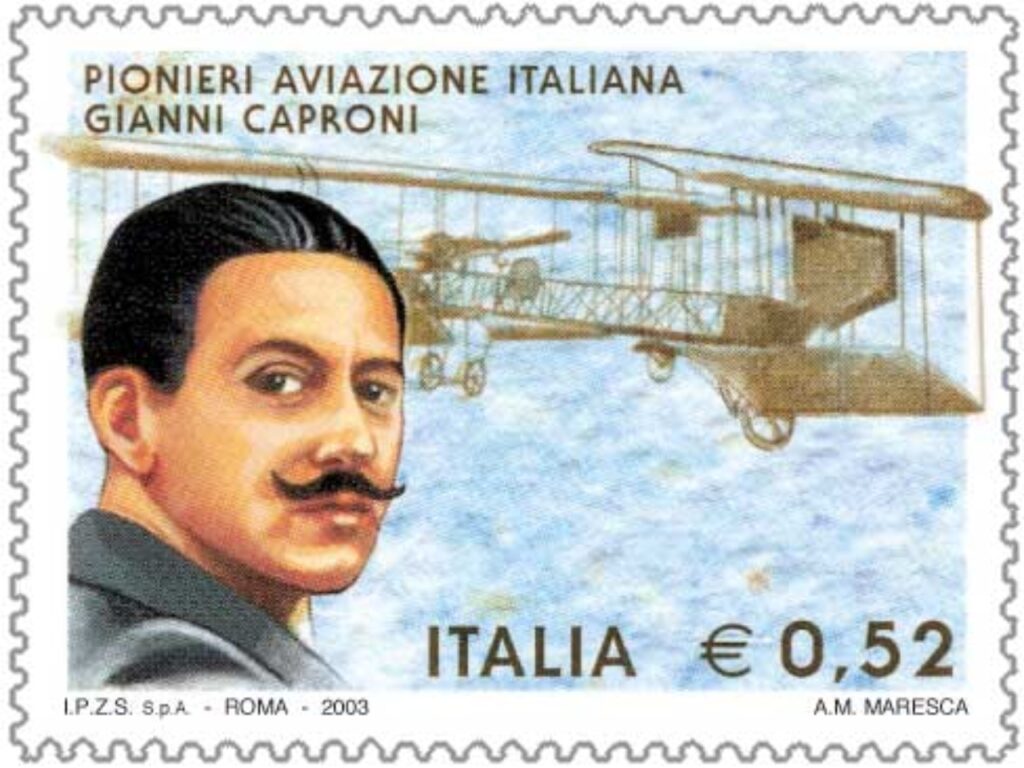
Agusta
Of the whole group, only Caproni Vizzola survived and, in 1983, it was taken over by Agusta, which manufactured helicopters. The name Agusta first appeared in 1907, and Count Giovanni Agusta, who was born in Parma into a family of Sicilian aristocrats, was hired at Caproni in 1913. In 1923, he went on to found a company for the repair and overhaul of Caproni trimotors in Cascina Costa, an area of Samarate. Giovanni Agusta died prematurely in 1927 and the company passed under the leadership of his wife Giuseppina and their eldest son Domenico, expanding its business with aircraft built under license.
With the end of the Second World War and the ban on continued aircraft production placed by the allies with the peace treaty, Count Domenico Agusta decided to start a company for the production and commercialization of motor vehicles. Starting in 1945, Meccanica Verghera, (named after another area of Samarate), would go on to produce over thirty very successful models. The MV Agusta racing department, established not long afterwards, brought the company international fame and notoriety with three thousand victories from 1952 to 1976 and 270 titles won at the World Grand Prix. In 1977, the competitive sector was suspended and then resumed in 2004 for the Superbike and 2019 for the Moto2 competition. The MVAgusta brand was acquired in 1992 by Cagiva of Schiranna, near Varese.
AB-47
In the 1950s, once the restrictions imposed by the allies had ceased, aeronautical activity resumed in Cascina Costa. 1952 is the year that sees a decisive turning point and the beginning of the production of helicopters. The opportunity came with the American company Bell Aircraft Corporation, manufacturer of the Model 47 helicopter, the first helicopter certified for civil use since 1946, that chose Agusta for the construction of this helicopter in Europe. More than 5,600 examples were produced up to the year 1974, including 1,200 built under license by Agusta in Italy where it was called the AB-47, with 239 built in Japan and 239 in the United Kingdom. This model also became very popular for model making. Below is the photo of the model box.
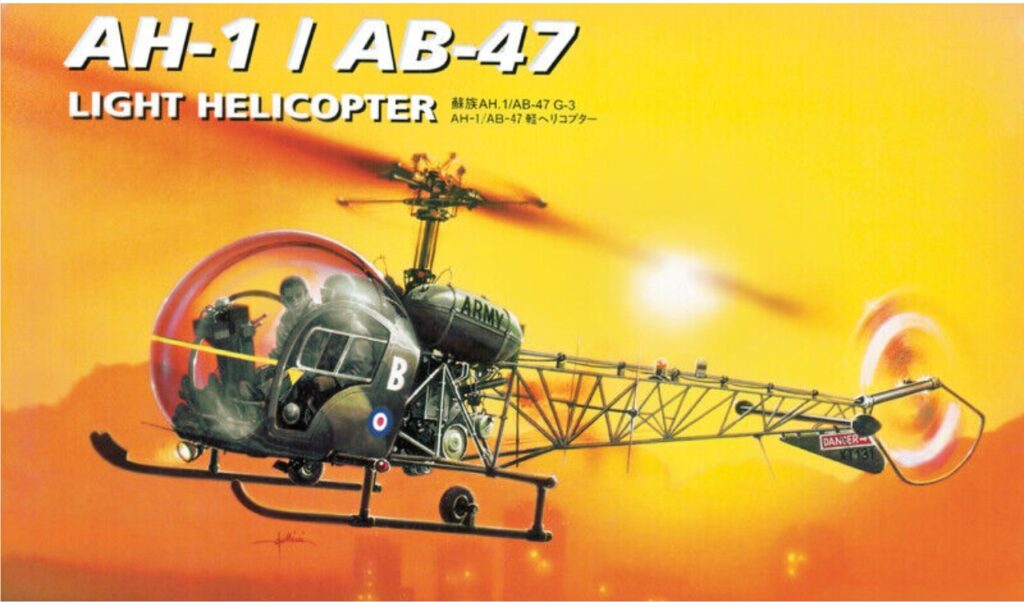
Between 1954 and 1956, 100 helicopters of its own production were delivered throughout Europe. In the 1960s, Agusta expanded its range of licensed productions, establishing itself on the world market.
A109
On the 4th August 1971, a few months after the death of Domenico Agusta, the A109 aircraft flew for the first time. It was a fast, elegant, eight-seater, four-bladed, twin-engine aircraft boasting innovative features and high performance which went into production in 1975 as a multirole aircraft, suitable for VIP transport, rescue and military use. The helicopter, photo below, was a great success all over the world, and hundreds of units were sold. It is still in production today.
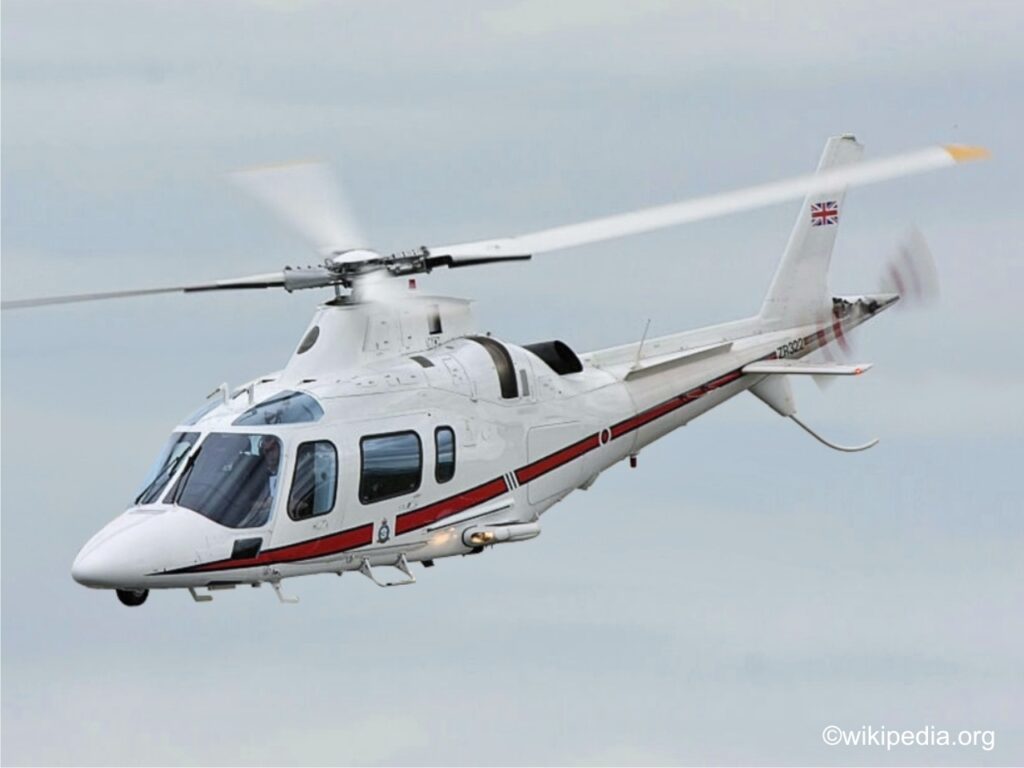
The last of Giovanni’s sons, Count Corrado Agusta, who in 1958 became responsible for obtaining contracts for the company around the world along with Vittorio Emanuele of Savoy, became president of the company following the death of his brother. In 1983, Agusta also decided to build the A129 Mangusta, the first combat helicopter to be designed and built entirely in Europe. With the A109 and A129 Mangusta, Agusta became one of a small number of leading helicopter companies worldwide.
In 2000, Agusta merged with Westland Helicopters giving life to Agusta Westland, which, in 2016, merged with the helicopter sector of Finmeccanica, in 2017, was renamed Leonardo Helicopter Division, and is partly state-owned. In 2002, the Senior Company Workers Group founded the Museum of Agusta to commemorate the success in various cutting-edge technological sectors that has accompanied this company which has been managed by the heirs of the same family in over a century of history. Success that has forever filled the hearts of the people of Samara with pride and gratitude. The Villa that Count Domenico Agusta had built on the hill next to the Cascina Costa factory is the headquarters of the foundation, which has been open for guided tours every Sunday since 2017. www.museoagusta.it
Sliding doors
The glorious development of the Malpensa moors in the aeronautical sector “risked” never happening when, at the beginning of the 20th century, this area of Gallarate aspired to become a reference point for motoring. In fact, there were thoughts of building Italy’s first racetrack, which would have been the third in the world, coming after that of Brooklands in the United Kingdom which opened in 1907 and that of Indianapolis built in the USA two years later. This would probably have diminished the area’s link to aviation and the airport, and removed Monza from its role as the Italian “capital” of motoring, a position it has enjoyed since 1922.
Enzo Ferrari
The area’s passion for cars and motorcycles began on 5 September 1920 when the moor of Gallarate hosted an Italian championship road race between cars with aircraft engines on the 22 km Ticino Valley Circuit, a race which would later be repeated ten times. The circuit was from Gallarate to Cascina Malpensa, passing through Lonate Pozzolo, Samarate and Verghera. On 14 November 1920, a race based on speed per kilometer was also held on the long straight road between Ferno and Samarate, and was won by Eugenio Silvani, aboard a Packard which reached 157.894 km/h, a crazy speed for the time, with a 22-year-old Enzo Ferrari finishing fourth.
There was also a motorcycle race won by Carlo Maffeis, who, with his 500cc Bianchi motorcycle, reached 125 km/h. These races aroused the interest of Gallarate enthusiasts and, following the success of these road races, in December, enthusiasts of local motor clubs also proposed building a national motor racing circuit on the heath between Gallarate and Malpensa. History tells us that the racetrack was built in Monza instead, inside the park of the royal villa. For Gallarate it was only a dream. Photo www.malpensanews.it
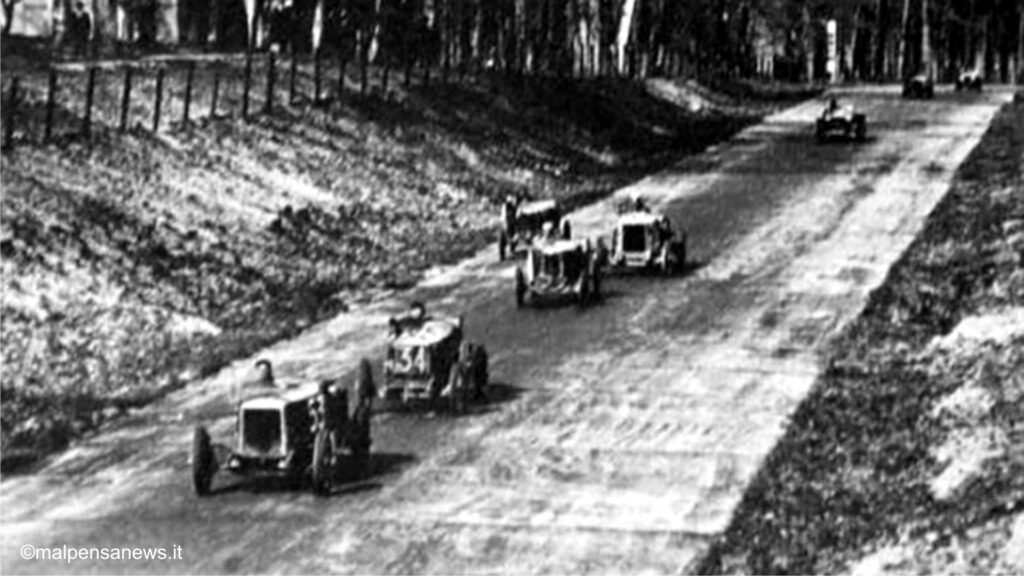
This concludes the story, extraordinary from an economic point of view, of this “Land of Pioneers” where the desire to create is widespread, and where intuition, foresight and industrial spirit are combined with creativity, attention to the conditions of workers, and an appreciation of beauty, and where a love of the territory is expressed through profound patronage.
Return to Gallarate
